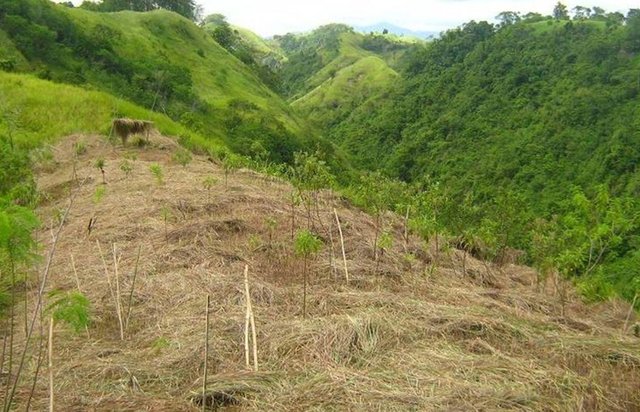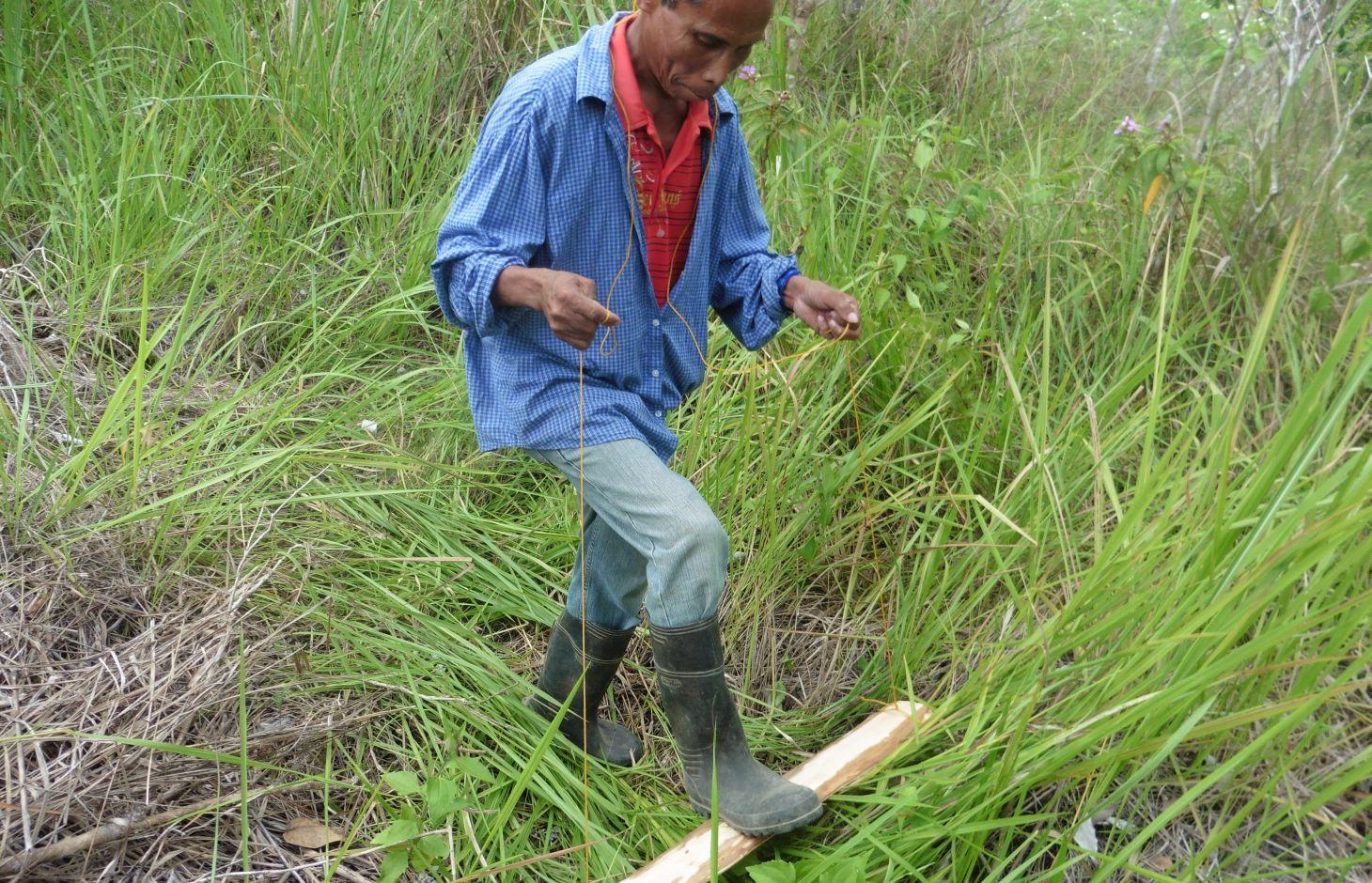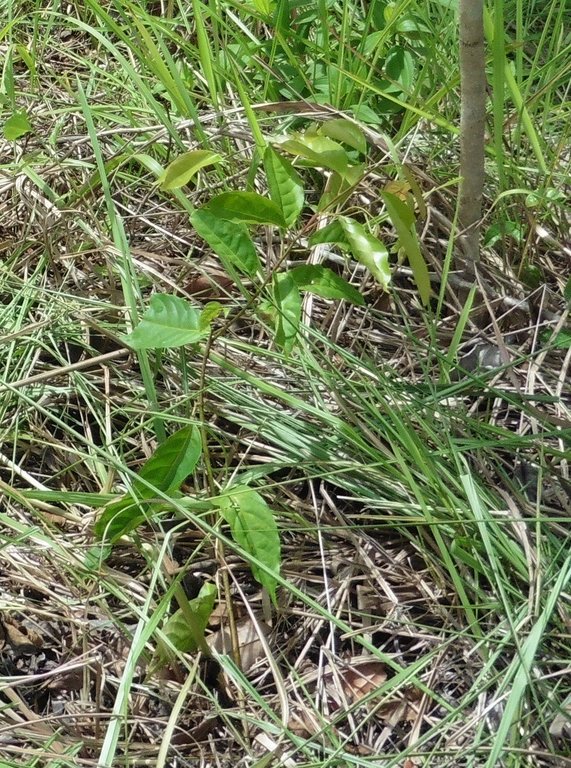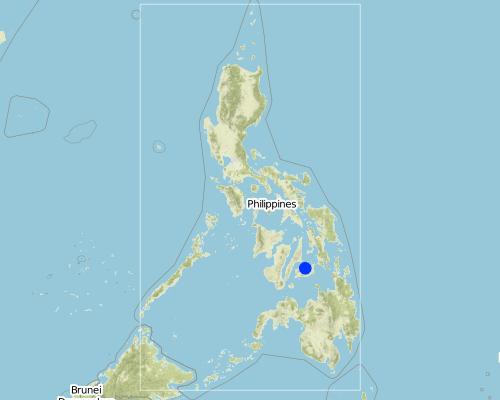Pressing of Cogon Grass (Imperata cylindrica) [Philippines]
- Création :
- Mise à jour :
- Compilateur : Philippine Overview of Conservation Approaches and Technologies
- Rédacteur : –
- Examinateur : Fabian Ottiger
technologies_1729 - Philippines
Voir les sections
Développer tout Réduire tout1. Informations générales
1.2 Coordonnées des personnes-ressources et des institutions impliquées dans l'évaluation et la documentation de la Technologie
Personne(s)-ressource(s) clé(s)
Spécialiste GDT:
Padilla Alberto
Danao Municipality, Local Government Unit
Danao City, Cebu, Philippines
Philippines
Spécialiste GDT:
Dacumos Evangeline
Department of Agriculture-Bureau of Soils and Water Management
Room 522, 5th Floor, Department of Agriculture Building, Elliptical Road, Quezon City, 1100 Metro Manila, Philippines
Philippines
Spécialiste GDT:
Espanto Patrick Benson
Department of Agriculture-Bureau of Soils and Water Management
Room 522, 5th Floor, Department of Agriculture Building, Elliptical Road, Quezon City, 1100 Metro Manila, Philippines
Philippines
Spécialiste GDT:
Dinamling Djolly Ma
Department of Agriculture-Bureau of Soils and Water Management
Room 522, 5th Floor, Department of Agriculture Building, Elliptical Road, Quezon City, 1100 Metro Manila, Philippines
Philippines
Spécialiste GDT:
Castillo Forester Emma
emmancastillo2014@gmail.com
Department of Environment and Natural Resources-Forest Management Bureau
Visayas Avenue, Diliman, Quezon City
Philippines
Nom du ou des institutions qui ont facilité la documentation/ l'évaluation de la Technologie (si pertinent)
Danao Municipality - PhilippinesNom du ou des institutions qui ont facilité la documentation/ l'évaluation de la Technologie (si pertinent)
Bureau of Soils and Water Management (Bureau of Soils and Water Management) - PhilippinesNom du ou des institutions qui ont facilité la documentation/ l'évaluation de la Technologie (si pertinent)
Forest Management Bureau (Forest Management Bureau) - Philippines1.3 Conditions relatives à l'utilisation par WOCAT des données documentées
Quand les données ont-elles été compilées (sur le terrain)?
11/06/2015
Le compilateur et la(les) personne(s) ressource(s) acceptent les conditions relatives à l'utilisation par WOCAT des données documentées:
Oui
1.5 Référence au(x) questionnaire(s) sur les Approches de GDT

Assisted Natural Regeneration (ANR) [Philippines]
A process of rehabilitating degraded forest lands by taking advantage of trees already growing in the area.
- Compilateur : Philippine Overview of Conservation Approaches and Technologies
2. Description de la Technologie de GDT
2.1 Courte description de la Technologie
Définition de la Technologie:
An indigenous technology of enhancing wildling growth by pressing of cogon grass.
2.2 Description détaillée de la Technologie
Description:
Cogon pressing is a simple low-cost technique of deterring the rapid growth of grasses that serve as competitors of wildlings for nutrient, water and light in the natural forest. The technology is described as the pressing down of cogon grass using a wooden plank tied in a rope, manually-operated by foot of the land user. Instead of cutting or burning the cogon, this technology is being used by the land user it was proven to be more effective in controlling cogon grass to grow fast. Wildlings are seedlings derived from seeds scattered by birds, insects, animals and wind without human intervention. By pressing the cogon, the wildlings can grow faster in the natural forest.
Purpose of the Technology: Cogon grass is a weed which grows quickly. It is difficult to control due to its small seeds carried by wind and rhizomes that are very resilient even to low soil fertility and harsh environment. In regenerating wildlings in the natural forest, these invasive weeds are the main competitor for nutrients water and space. The land user's common practice is to cut or burn the cogon grass in order to plant trees. However, this cannot be done in a natural forest because it destroys the flora and fauna. Thus, the indigenous technology of pressing the cogon grass was adapted to nurture wildlings of indigenous tree species. It allows the wildlings to grow naturally by reducing the competition from weedy species. It also provides an alternative technique of controlling weeds/grasses without burning. Burning grasses release greenhouse gases to the atmosphere.
Establishment / maintenance activities and inputs: Prior to the pressing of cogon grass, the selection of wildlings for natural regeneration is done by marking it with a peg. The wildling must be a robust/healthy indigenous tree species. Ring weeding is done at least one half meter radius around the wildling. Then, the surrounding cogon grass are suppressed through a method called “ pressing” or “lodging” using a wooden plank approximately 1” x 6-12” x 3-4’. A rope is knotted on both ends of the plank and looped over the shoulder of the land user for support and ease the pressing operation. The length of the rope is adjusted according to the height of the land user. The land user holds the rope on both side to lift the plank, and then, stepping on it to press the cogon grass repeatedly. The activity is done before and after the onset of rainy season. It is best to practice the technology when the stems of the cogon grass are still soft. The pressed cogon will last up to six months before it will produce new shoot and regenerate again.
Natural / human environment: The area is part of the forest reserve in Danao, Bohol primarily intended for nature conservation and protection. It is about 100-500 m.a.s.l with moderately rolling to hilly slopes. It is under humid tropics climate with an average annual rainfall of 1500-2000 mm per year. The soil is loam, shallow depth, low fertility, with good drainage and medium water storage capacity. The area has high biodiversity as indicated by the presence of different indigenous trees and plants species, and wild birds. The land users who apply the technology are small holder farmers. They are members of a local cooperative. The population density is about 10-50 persons per sq. km. Since extraction of resources from the forest is prohibited, off-farm income is very important to the land users. Access to basic services and infrastructures are low.
2.3 Photos de la Technologie
2.5 Pays/ région/ lieux où la Technologie a été appliquée et qui sont couverts par cette évaluation
Pays:
Philippines
Région/ Etat/ Province:
Brgy. San Miguel
Autres spécifications du lieu:
Danao, Bohol
Map
×2.6 Date de mise en œuvre de la Technologie
Si l'année précise est inconnue, indiquez la date approximative: :
- il y a plus de 50 ans (technologie traditionnelle)
2.7 Introduction de la Technologie
Spécifiez comment la Technologie a été introduite: :
- dans le cadre d'un système traditionnel (> 50 ans)
Commentaires (type de projet, etc.) :
The technology was introduced through the Assisted Natural Regeneration (ANR) Project.
3. Classification de la Technologie de GDT
3.2 Type(s) actuel(s) d'utilisation des terres, là où la Technologie est appliquée

Forêts/ bois
- Deforested land
Produits et services:
- Conservation/ protection de la nature
- Protection contre les aléas naturels
- Increase in biodiversity
Commentaires:
Major land use problems (compiler’s opinion): Competition with speedy species and recurring disturbances such as fire
Other type of forest: Deforested land
Forest products and services: nature conservation / protection, protection against natural hazards
Other forest products and services: increase biodiversity
3.4 Groupe de GDT auquel appartient la Technologie
- gestion des forêts naturelles et semi-naturelles
3.5 Diffusion de la Technologie
Spécifiez la diffusion de la Technologie:
- répartie uniformément sur une zone
Si la Technologie est uniformément répartie sur une zone, indiquez la superficie couverte approximative:
- 0,1-1 km2
Commentaires:
Total area covered by the SLM Technology is 0.2 m2.
3.6 Mesures de GDT constituant la Technologie

pratiques végétales
- V5: Autres
Commentaires:
Main measures: vegetative measures
Specification of other vegetative measures: Suppressing of cogon grasses
Type of vegetative measures: scattered / dispersed
3.7 Principaux types de dégradation des terres traités par la Technologie

dégradation biologique
- Bh: perte d’habitats
- Bf: effets néfastes des feux
Commentaires:
Main type of degradation addressed: Bh: loss of habitats
Secondary types of degradation addressed: Bf: detrimental effects of fires
Main causes of degradation: deforestation / removal of natural vegetation (incl. forest fires), other human induced causes (specify) (fire)
3.8 Prévention, réduction de la dégradation ou réhabilitation des terres dégradées
Spécifiez l'objectif de la Technologie au regard de la dégradation des terres:
- prévenir la dégradation des terres
Commentaires:
Main goals: prevention of land degradation
4. Spécifications techniques, activités, intrants et coûts de mise en œuvre
4.1 Dessin technique de la Technologie
Auteur:
Mr. Patricio A. Yambot, Bureau of Soils and Water Management
4.2 Spécification/ explications techniques du dessin technique
Pressing grass with the use of wooden board
Location: Brgy. San Miguel. Danao, Bohol
Date: June 10, 2015
Technical knowledge required for field staff / advisors: moderate
Technical knowledge required for land users: moderate (Hands-on training for land users, they should learn the craft of pressing)
Main technical functions: control of fires
Secondary technical functions: stabilisation of soil (eg by tree roots against land slides)
Scattered / dispersed
Vegetative material: T : trees / shrubs
Trees/ shrubs species: dipterocarps and indigenous species, naturally regenarated
4.3 Informations générales sur le calcul des intrants et des coûts
autre/ monnaie nationale (précisez):
peso
Indiquer le taux de change du dollars en monnaie locale (si pertinent): 1 USD= :
45,0
Indiquez le coût salarial moyen de la main d'œuvre par jour:
4.44
4.4 Activités de mise en place/ d'établissement
| Activité | Type de mesures | Calendrier | |
|---|---|---|---|
| 1. | Identification of wildlings (2 feet high) | Végétale | |
| 2. | ring weeding | Végétale | |
| 3. | pressing of cogon away from wildlings | Végétale | 3 times/year |
| 4. | Application of fertilizer | Végétale |
4.5 Coûts et intrants nécessaires à la mise en place
| Spécifiez les intrants | Unité | Quantité | Coûts par unité | Coût total par intrant | % des coût supporté par les exploitants des terres | |
|---|---|---|---|---|---|---|
| Main d'œuvre | Labour | ha | 1,0 | 24,44 | 24,44 | 100,0 |
| Matériaux de construction | Wood | ha | 1,0 | 2,22 | 2,22 | 100,0 |
| Matériaux de construction | Rope | ha | 1,0 | 1,78 | 1,78 | 100,0 |
| Coût total de mise en place de la Technologie | 28,44 | |||||
Commentaires:
Duration of establishment phase: 3 month(s)
4.6 Activités d'entretien/ récurrentes
| Activité | Type de mesures | Calendrier/ fréquence | |
|---|---|---|---|
| 1. | Pressing of Cogon | Végétale | every other month |
4.7 Coûts et intrants nécessaires aux activités d'entretien/ récurrentes (par an)
| Spécifiez les intrants | Unité | Quantité | Coûts par unité | Coût total par intrant | % des coût supporté par les exploitants des terres | |
|---|---|---|---|---|---|---|
| Main d'œuvre | Labour | ha | 1,0 | 26,68 | 26,68 | 100,0 |
| Coût total d'entretien de la Technologie | 26,68 | |||||
5. Environnement naturel et humain
5.1 Climat
Précipitations annuelles
- < 250 mm
- 251-500 mm
- 501-750 mm
- 751-1000 mm
- 1001-1500 mm
- 1501-2000 mm
- 2001-3000 mm
- 3001-4000 mm
- > 4000 mm
Zone agro-climatique
- humide
Thermal climate class: tropics
5.2 Topographie
Pentes moyennes:
- plat (0-2 %)
- faible (3-5%)
- modéré (6-10%)
- onduleux (11-15%)
- vallonné (16-30%)
- raide (31-60%)
- très raide (>60%)
Reliefs:
- plateaux/ plaines
- crêtes
- flancs/ pentes de montagne
- flancs/ pentes de colline
- piémonts/ glacis (bas de pente)
- fonds de vallée/bas-fonds
Zones altitudinales:
- 0-100 m
- 101-500 m
- 501-1000 m
- 1001-1500 m
- 1501-2000 m
- 2001-2500 m
- 2501-3000 m
- 3001-4000 m
- > 4000 m
Commentaires et précisions supplémentaires sur la topographie:
Altitudinal zone: 101-500 m a.s.l. (220m)
5.3 Sols
Profondeur moyenne du sol:
- très superficiel (0-20 cm)
- superficiel (21-50 cm)
- modérément profond (51-80 cm)
- profond (81-120 cm)
- très profond (>120 cm)
Texture du sol (de la couche arable):
- moyen (limoneux)
Matière organique de la couche arable:
- moyen (1-3%)
Si disponible, joignez une description complète du sol ou précisez les informations disponibles, par ex., type de sol, pH/ acidité du sol, capacité d'échange cationique, azote, salinité, etc.
Soil fertility is: Medium
Soil water storage capacity is: Medium
5.4 Disponibilité et qualité de l'eau
Disponibilité de l’eau de surface:
moyenne
5.5 Biodiversité
Diversité des espèces:
- élevé
5.6 Caractéristiques des exploitants des terres appliquant la Technologie
Orientation du système de production:
- subsistance (auto-approvisionnement)
Revenus hors exploitation:
- > 50% de tous les revenus
Individus ou groupes:
- employé (entreprise, gouvernement)
Genre:
- femmes
- hommes
Indiquez toute autre caractéristique pertinente des exploitants des terres:
Land users applying the Technology are mainly common / average land users
Population density: 10-50 persons/km2
Annual population growth: 1% - 2%; 1%
Off-farm income specification: Since extraction of resources from the forest is prohibited, off- farm income is very important to the land users.
Market orientation of production system: Forest conservation. Green braks are planted with cash crops as immediate source of food for subistence.
5.7 Superficie moyenne des terres détenues ou louées par les exploitants appliquant la Technologie
- < 0,5 ha
- 0,5-1 ha
- 1-2 ha
- 2-5 ha
- 5-15 ha
- 15-50 ha
- 50-100 ha
- 100-500 ha
- 500-1 000 ha
- 1 000-10 000 ha
- > 10 000 ha
Cette superficie est-elle considérée comme de petite, moyenne ou grande dimension (en se référant au contexte local)?
- moyenne dimension
5.8 Propriété foncière, droits d’utilisation des terres et de l'eau
Propriété foncière:
- état
Droits d’utilisation des terres:
- accès libre (non organisé)
5.9 Accès aux services et aux infrastructures
santé:
- pauvre
- modéré
- bonne
éducation:
- pauvre
- modéré
- bonne
assistance technique:
- pauvre
- modéré
- bonne
emploi (par ex. hors exploitation):
- pauvre
- modéré
- bonne
marchés:
- pauvre
- modéré
- bonne
énergie:
- pauvre
- modéré
- bonne
routes et transports:
- pauvre
- modéré
- bonne
6. Impacts et conclusions
6.1 Impacts sur site que la Technologie a montrés
Impacts socio-économiques
Production
risque d'échec de la production
Revenus et coûts
charge de travail
Impacts socioculturels
institutions communautaires
apaisement des conflits
Improved livelihoods and human well-being
Commentaires/ spécifiez:
yes little, it generated jobs
Impacts écologiques
Cycle de l'eau/ ruissellement
ruissellement de surface
évaporation
Sols
humidité du sol
couverture du sol
cycle/ recharge des éléments nutritifs
matière organique du sol/ au dessous du sol C
Biodiversité: végétale, animale
biomasse/ au dessus du sol C
diversité végétale
espèces bénéfiques
diversité des habitats
Réduction des risques de catastrophe et des risques climatiques
émissions de carbone et de gaz à effet de serre
risques d'incendies
Autres impacts écologiques
Regeneration of indigenous species
Adaption to climate change
Accidents/injuries induced by humans
6.2 Impacts hors site que la Technologie a montrés
dommages sur les champs voisins
dommages sur les infrastructures publiques/ privées
6.3 Exposition et sensibilité de la Technologie aux changements progressifs et aux évènements extrêmes/catastrophes liés au climat (telles que perçues par les exploitants des terres)
Changements climatiques progressifs
Changements climatiques progressifs
| Saison | Type de changements/ extrêmes climatiques | Comment la Technologie fait-elle face à cela? | |
|---|---|---|---|
| températures annuelles | augmente | pas bien |
Extrêmes climatiques (catastrophes)
Catastrophes météorologiques
| Comment la Technologie fait-elle face à cela? | |
|---|---|
| pluie torrentielle locale | pas connu |
| tempête de vent locale | pas connu |
Catastrophes climatiques
| Comment la Technologie fait-elle face à cela? | |
|---|---|
| sécheresse | pas connu |
Catastrophes hydrologiques
| Comment la Technologie fait-elle face à cela? | |
|---|---|
| inondation générale (rivière) | pas connu |
Autres conséquences liées au climat
Autres conséquences liées au climat
| Comment la Technologie fait-elle face à cela? | |
|---|---|
| réduction de la période de croissance | pas connu |
6.4 Analyse coûts-bénéfices
Quels sont les bénéfices comparativement aux coûts de mise en place (du point de vue des exploitants des terres)?
Rentabilité à court terme:
positive
Rentabilité à long terme:
positive
Quels sont les bénéfices comparativement aux coûts d'entretien récurrents (du point de vue des exploitants des terres)?
Rentabilité à court terme:
positive
Rentabilité à long terme:
positive
6.5 Adoption de la Technologie
Commentaires:
100% of land user families have adopted the Technology with external material support
Comments on acceptance with external material support: The Department of Environment and Natural Resources (DENR) provided financial and technical support for the implementation of the technology. The Local Government Unit (LGU) of Bohol provided additional labor force for the maintenance.
6.7 Points forts/ avantages/ possibilités de la Technologie
| Points forts/ avantages/ possibilités du point de vue du compilateur ou d'une autre personne ressource clé |
|---|
|
Low cost technology How can they be sustained / enhanced? Re-use and proper safe keeping of material. |
|
Limits height of fire How can they be sustained / enhanced? Frequent regular conduct of "pressing" activity |
6.8 Faiblesses/ inconvénients/ risques de la Technologie et moyens de les surmonter
| Faiblesses/ inconvénients/ risques du point de vue de l’exploitant des terres | Comment peuvent-ils être surmontés? |
|---|---|
| Labor may cause some injury to workers | Extra care in conducting pressing activity particularly in steep areas |
| Increased dry matter susceptible to forest fire | Maintenance of fire lines |
| Faiblesses/ inconvénients/ risques du point de vue du compilateur ou d'une autre personne ressource clé | Comment peuvent-ils être surmontés? |
|---|---|
| Labor intensive | Thorough "pressing" of cogon grass to deter growth |
Liens et modules
Développer tout Réduire toutLiens

Assisted Natural Regeneration (ANR) [Philippines]
A process of rehabilitating degraded forest lands by taking advantage of trees already growing in the area.
- Compilateur : Philippine Overview of Conservation Approaches and Technologies
Modules
Aucun module trouvé





